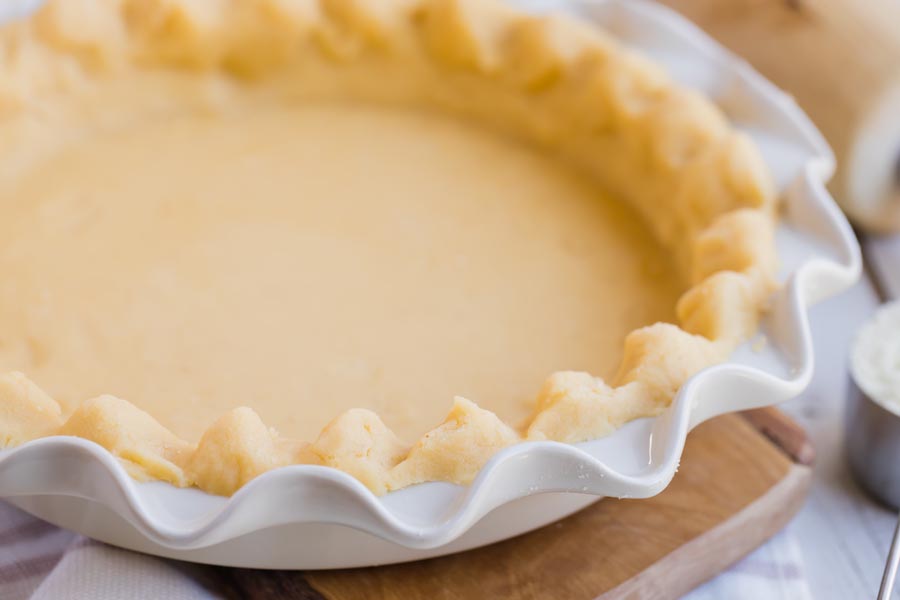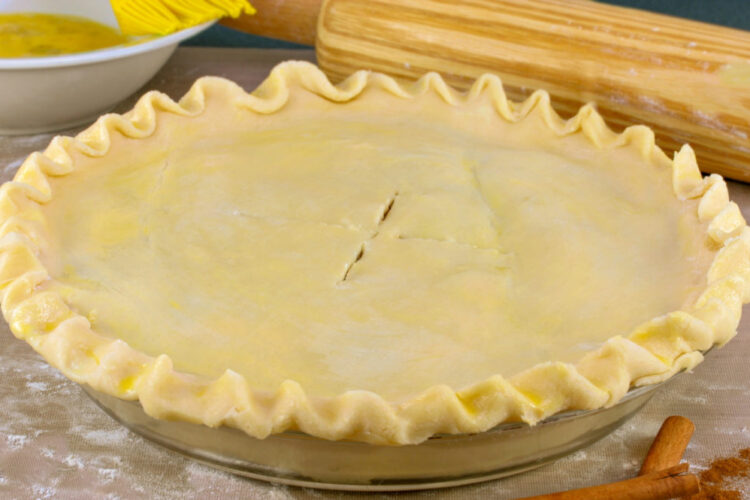The Best Flaky Keto Pie Crust
Discover The Best Flaky Keto Pie Crust: a low-carb, almond-and-coconut flour crust that’s buttery, rollable, and holds fillings beautifully for sweet or savory keto pies.
Key Features
- Low carb / keto-friendly: uses almond flour and a touch of coconut flour.
- Flaky and tender: all-butter crust with a light, delicate crumb.
- Easy to work with: rollable crust that holds together without crumbling.
- Sugar-free: uses keto-friendly sweetener if you’re making a dessert crust.
Ingredients for The Best Flaky Keto Pie Crust
- 1 1/2 cups (135 g) almond flour
- 1/4 cup (28 g) finely grated unsweetened coconut flour
- 1 tablespoon ground flaxseed meal (optional, for extra tenderness and flakiness)
- 1/4 teaspoon sea salt
- 2 tablespoons (28 g) cold unsalted butter, cut into small pieces
- 2 tablespoons (28 g) cold cream cheese, cut into small pieces
- 1 large egg yolk
- 1–2 tablespoons (15–30 ml) ice-cold water (as needed)
- 1 teaspoon apple cider vinegar or lemon juice (optional, helps tenderness)
For a more buttery, extra-flaky crust, you can also add:
- 1–2 tablespoons (14–28 g) cold unsalted butter, cut into small pieces, folded into the dough after the initial mix
Equipment for The Best Flaky Keto Pie Crust
- Food processor (preferred) or a large bowl with a pastry cutter
- Rolling pin
- 9-inch pie dish
- Parchment paper or plastic wrap
- Small bowl for water
Instructions
1) Do a cold setup
- Chill all cold ingredients (butter, cream cheese) for at least 15–20 minutes before starting.
- If you have time, refrigerate the almond flour and coconut flour for 10 minutes; this helps keep the dough cool.
2) Make the dough
- In a food processor, combine the almond flour, coconut flour, flaxseed meal (if using), and salt. Pulse to blend.
- Add the cold butter and cream cheese. Pulse until the mixture resembles coarse meal with pea-sized pieces.
- Add the egg yolk and vinegar/lemon juice (if using. This helps tenderness). Pulse briefly to combine.
- With the processor running, add ice-cold water, one tablespoon at a time, just until the dough comes together. It should hold when pressed but not be sticky.
- If you don’t have a processor: whisk dry ingredients, then cut in butter and cream cheese with a pastry cutter or two knives until crumbly. Stir in yolk, vinegar, and water gradually until a cohesive dough forms.
- Turn the dough out onto a piece of parchment paper. Gently shape into a flat disk, about 1 inch thick. Wrap and chill for 30–45 minutes. Chilling is essential for flakiness and handling.
3) Roll and pre-shape
- Lightly flour (with a touch of almond flour) your parchment or rolling surface. Roll the dough between two sheets of parchment to about 12 inches in diameter, aiming for even thickness.
- If the dough cracks, let it rest 5–10 minutes and roll again. Keeping it cold helps.
4) Pre-bake (optional for extra crispiness)
Preheat oven to 350°F (175°C).
- Transfer the dough (still on the parchment) to a pie plate. Gently ease into the dish without stretching.
- Press the dough into the corners and trim any excess around the edges.
- Prick the bottom with a fork to prevent bubbling.
- For a crisper crust, line with parchment and fill with pie weights or dried beans.
- Bake 12–15 minutes until the edges just begin to color. Remove weights/liners and bake 6–8 minutes more if you want a crisper bottom. Let cool before filling.
If you’re making a no-bake or custard pie, skip the pre-bake and blind bake as needed by your recipe.
5) Fill and bake as your recipe dictates
- Fill with your desired keto filling. Bake according to the filling’s instructions, usually until the filling is set and the crust edges are golden.
Tips for Perfect Flakiness
- Keep everything cold: cold fat makes flaky layers when baked.
- Do not overwork the dough: mix until just combined to avoid gluten-like toughness (gluten is minimal in keto flours, but overworking still makes dough tough).
- Use a light touch when rolling: rolling too hard reforms the fat into large pieces, reducing flakiness.
- If the dough seems dry, add water one teaspoon at a time until it just comes together.
- Par-bake for stability when using fillings with high liquid content (like custards) to prevent soggy crust.
Variations
- Herbed Keto Pie Crust (savory): Add 1/2 teaspoon dried thyme or rosemary and a pinch of garlic powder to the dry mix.
- Cheesy Keto Crust: Replace 1–2 tablespoons of almond flour with grated hard cheese (parmesan or cheddar) for a cheesy crust that’s great with savory quiches.
- Coconut-Flower Crust: Increase coconut flour to 1/3 cup if you want a more pronounced coconut flavor (use slightly less water as coconut flour absorbs more).
Common Mistakes to Avoid
- Too much water: makes dough sticky and hard to roll. Add gradually.
- Not chilling long enough: reduces flakiness and makes handling difficult.
- Over-baking the crust for custards: causes a crumbly texture when cooled. Par-baking helps.
Storage & Make-Ahead
- Unbaked dough: refrigerate up to 2 days or freeze up to 1 month. Thaw in the fridge before rolling.
- Baked crust (par-baked): store in the fridge for 2–3 days or freeze for up to 1 month. Reheat gently before filling.
finally we hope that enjoy by The Best Flaky Keto Pie Crust

